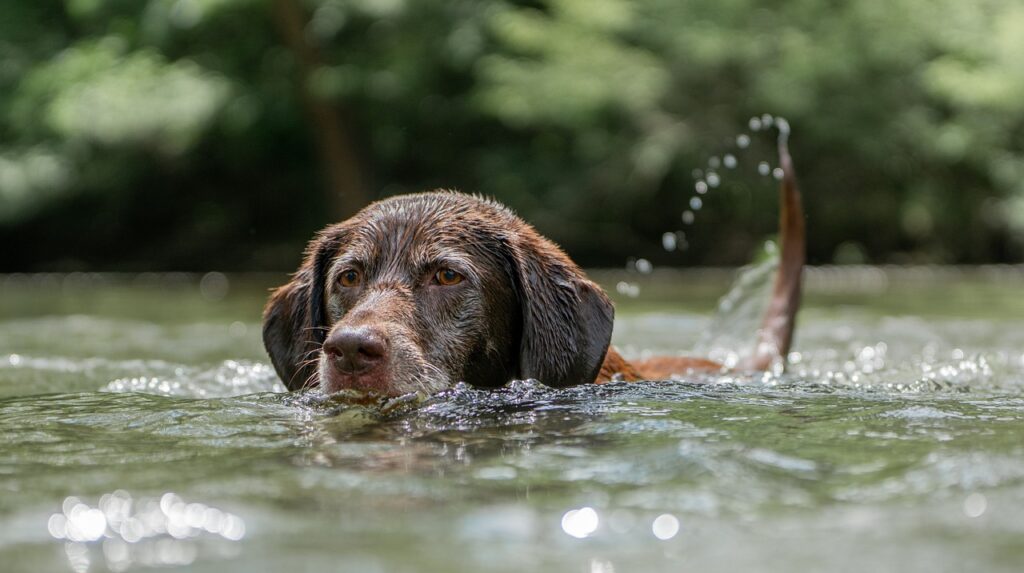Having an animal companion is one of the most joyous things every pet lover can attest to. Not only because they provide us with happiness, unconditional love, and company, but because they have a way of making life a little more bearable for us, pets will always have a special place in our hearts. With that, it is our responsibility as these creatures’ guardians to put their safety and wellbeing first, creating surroundings that support their mental and physical well-being as well as their emotional and spiritual fulfillment. Examining the many facets of maintaining our pets’ health and safety is crucial, as is outlining methods for responsible pet ownership, preventative care, and pet safety.
Within the fields of environmental science and public health, some phenomena are frequently overlooked until they become significant issues. The poisoning linked to blue-green algae, or cyanobacteria as they are officially termed, is one such mysterious danger. These seemingly harmless species are found all over the world in freshwater habitats and have the power to have catastrophic effects on ecosystems and human health. The complex interactions between anthropogenic impacts, ecological dynamics, and environmental factors have led to the rise of blue-green algal toxicity as a serious problem. Blue-green algae were once only thought of as an annoyance or aesthetic quandary, but the discovery that they may also produce poisons has brought them to the forefront of scientific research and public health discussions.
What is Blue Green Algae?
A class of photosynthetic bacteria called blue-green algae, or cyanobacteria, can be found in a variety of aquatic settings, including lakes, ponds, rivers, streams, and even the ocean. Even though they go by the name “algae,” they are essentially prokaryotic creatures because they don’t have the other organelles and membrane-bound nucleus that are present in eukaryotic cells.
Fossil records of blue-green algae date back billions of years, making them among of the oldest living things on Earth. They are able to use sunlight for photosynthesis, which converts carbon dioxide and water into energy and oxygen. They can survive in a variety of aquatic environments thanks to their capacity for photosynthetic processes.
What are the signs and symptoms of Blue Green Algae Toxicity?
Dogs that are exposed to blue-green algae toxicity may exhibit a wide range of signs and symptoms, from minor gastrointestinal distress to serious and sometimes fatal consequences. The kind and amount of cyanotoxins consumed, the dog’s size and health, and the length of exposure are some of the variables that may affect how the symptoms manifest. The following are typical indications and manifestations of canine blue-green algae toxicity:
- Gastrointestinal symptoms
- Vomiting
- Diarrhea (which may be bloody)
- Excessive drooling
- Loss of appetite
- Abdominal pain or discomfort
- Neurological symptoms
- Weakness or lethargy
- Muscle tremors or twitching
- Difficulty walking or standing
- Seizures or convulsions
- Disorientation or confusion
- Incoordination or staggering gait
- Respiratory symptoms:
- Coughing
- Difficulty breathing
- Rapid or shallow breathing
- Dermatological symptoms:
- Skin irritation or rash (if the dog comes into direct contact with contaminated water)
- Redness or inflammation of the skin
- Itching or scratching
- Liver damage:
- Jaundice (yellowing of the skin, gums, or whites of the eyes)
- Abdominal swelling or bloating (due to fluid accumulation)
- Reduced urine production
It’s crucial to remember that blue-green algae toxicity symptoms can appear quickly, frequently minutes to hours after exposure. In extreme situations, the illness may worsen quickly and cause brain problems, liver failure, or pulmonary failure. If your dog appears to be displaying any of the above signs or symptoms, or if you suspect that it may have come into contact with blue-green algae, you should seek immediate veterinarian assistance.
It is best to seek veterinarian attention as soon as possible if you suspect your dog has consumed or come into contact with water polluted with blue-green algae. Do not wait for symptoms to appear. Your dog may seem unaffected at first, but in order to start the proper treatment and supportive care—which may include gastrointestinal protectants, hydration therapy, decontamination, and monitoring for potential complications—a timely veterinary evaluation is required.
What Should You Do When You Suspect That Your Fur Baby Has Been Exposed to Blue Green Algae?
In order to treat dogs with blue-green algae toxicity, veterinarians must provide quick, thorough care that addresses the unique symptoms and consequences brought on by cyanotoxin exposure. Depending on the type of cyanotoxin involved, the severity of the toxicity, and the health status of each dog, several treatment strategies may be used. The following are some typical therapies for treating dogs’ toxicity to blue-green algae:
- Decontamination: To reduce the dog’s future absorption of cyanotoxins, immediate decontamination may be required if it has recently consumed or come into contact with water contaminated with blue-green algae. To get rid of any algal residue and stop the dog from consuming tainted water in the future, this may entail washing the dog’s skin and coat with clean water.
- Supportive Care: Supportive treatment is typically necessary for dogs suffering from toxicity to blue-green algae in order to treat symptoms like dehydration, upset stomach, and neurological problems. This could involve taking medicine to stop nausea, vomiting, and diarrhea in addition to intravenous fluid therapy to preserve electrolyte balance and hydration.
- Close Monitoring: Throughout the course of treatment, it is imperative to closely examine the dog’s vital signs, organ function, and clinical state. This makes it possible for vets to evaluate how well the dog is responding to treatment, identify any deterioration of symptoms or consequences, and modify the treatment plan as necessary.
- Hospitalization: In order to get rigorous monitoring and treatment, dogs that have severe blue-green algae toxicity or sequelae may need to be admitted to a hospital. Hospitalization enables vets to treat dogs around-the-clock, give them intravenous fluids and medication, and keep a constant eye out for any indicators that their health is failing.
It’s crucial to remember that the prognosis for dogs exposed to blue-green algal toxicity might change based on a number of variables, including the kind and quantity of cyanotoxins present, the length of exposure, and the promptness of veterinary care. The best probability of a successful outcome is to maximize early detection and treatment.












